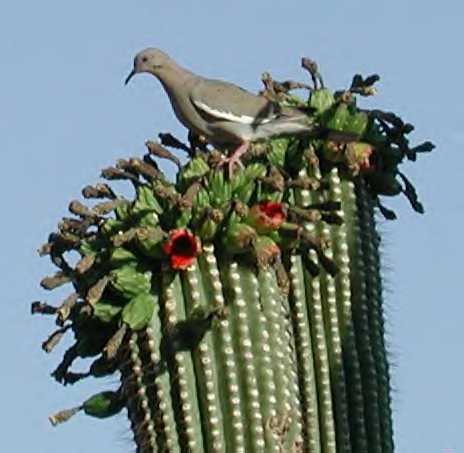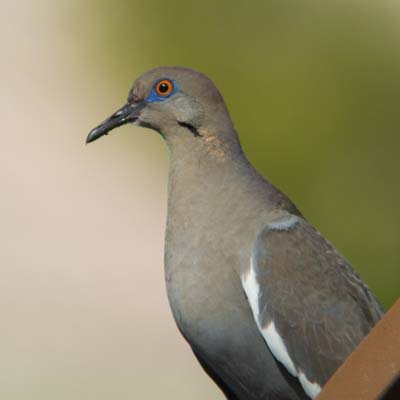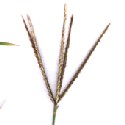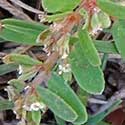White-winged Dove
Zenaida asiatica

The fruit pulp and seeds of the saguaro cactus are a vital food source for White-winged Doves. The fruit ripens around the end of June, about the time that the dove's hatchlings appear. Photographed at Piestewa Peak in Phoenix, Arizona.

Up close, the bird shows blue skin about the eyes and lores and bright orange eyes. Photo taken by Allan Ostling in Phoenix, Arizona, USA, May 2012.
These large doves inhabit both urban and natural Sonoran Desert habitats in the Arizona Desert. In the cities their most frequent food is the developing seeds of Bermuda grass. They are joined on lawns going to seed by Rock Doves, Inca Doves and Mourning Doves. In upland Sonoran Desert they feed on fruit of saguaro as well as a variety of other seeds and fruit. Bermuda grass and spurge are among these. The seeds of spurge probably contain toxins, but the doves eat them sparingly so as not to overwhelm their ability to tolerate or detoxify them.


Most White-winged Doves remain well south of the Mexican border until April, then towards the end of April they have arrived around Phoenix and Tucson. The distinctive, four-part cooing calls begin up to two hours before sunrise. Nest building, mating and egg laying are timed such that the fruiting of the saguaro cactus coincides with the young at their hungriest. The new season;s fledglings are on the wing by mid July. By the beginning of September most white-wings migrate away from the Sonoran Desert leaving their smaller cousins behind to face the gauntlet of dove hunting season.